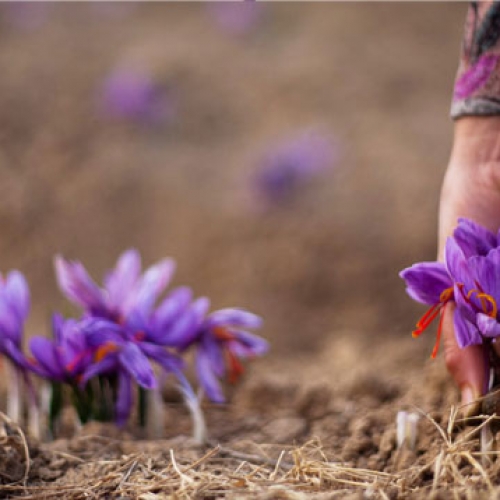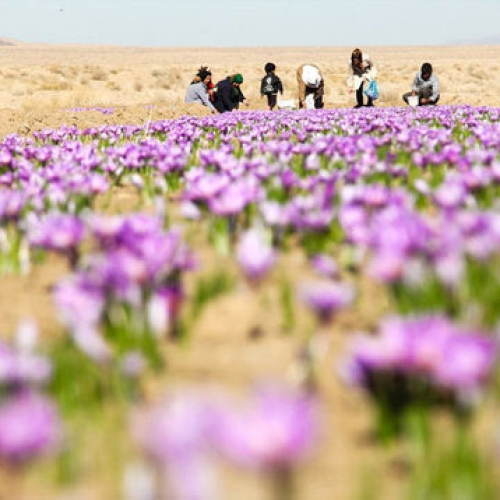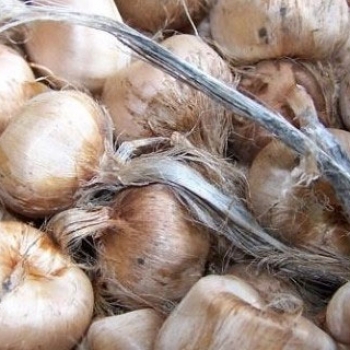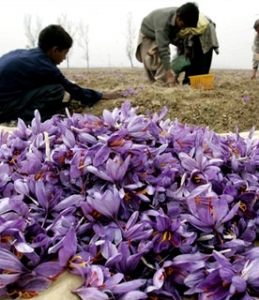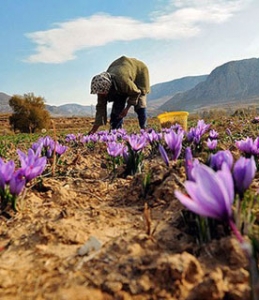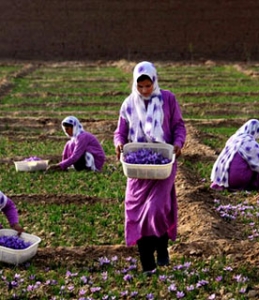Saffron is a spice derived from the flower of Crocus sativus, commonly known as the “saffron crocus”. Saffron crocus grows to 20–30 cm and bears up to four flowers, each with three vivid crimson stigmas or filaments, which are the distal end of a carpel. The styles and stigmas, which also called threads, are collected and dried to be used mainly as a seasoning and coloring agent in food. Saffron, long among the world’s most costly spices by weight is nativeto Greece and Persia and was first cultivated in Greece. As a genetically monomorphic clone, it was slowly propagated throughout much of Eurasia and was later brought to parts of North Africa, North America, and Oceania.
Saffron’s taste and iodoform- or hay-like fragrance result from the chemicals picrocrocin and safranal it also contains a carotenoid pigment, crocin, which imparts a rich golden-yellow hue to dishes and textiles. Its recorded history is attested in a 7th-century BC Assyrian botanical treatise compiled under Ashurbanipal and it has been traded and used for over four millennia. Iran now accounts for approximately 90% of the world production of Saffron.
About Saffron
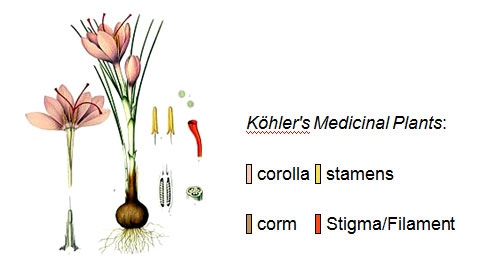
It is a sterile triploid form, which means that three homologous sets of chromosomes compose each specimen’s genetic complement; sativus bears eight chromosomal bodies per set, making for 24 in total. Being sterile, the purple flowers of sativus fail to produce viable seeds; reproduction hinges on human assistance: clusters of corms, underground, bulb-like, starch-storing organs, must be dug up, divided, and replanted. The compact corms are small, brown globules that can measure as large as 5 cm in diameter, have a flat base, and are shrouded in a dense mat of parallel fibers; this coat is referred to as the “corm tunic”. Corms also bear vertical fibers, thin and net-like, that grow up to 5 cm above the plant’s neck.
Crocus sativus thrives in the Mediterranean maquis, an ecotype superficially resembling the North American chaparral, and similar climates where hot and dry summer breezes sweep semi-arid lands. It can nonetheless survive cold winters, tolerating frosts as low as −10 °C and short periods of snow cover. What makes this possible is the timing of the local wet seasons; generous spring rains and drier summers are optimal. Rain immediately preceding flowering boosts saffron yields; rainy or cold weather during flowering promotes disease and reduces yields. Persistently damp and hot conditions harm the crops and rabbits, rats, and birds cause damage by digging up corms.
The plants fare poorly in shady conditions; they grow best in full sunlight. Fields that slope towards the sunlight are optimal (i.e., south-sloping in the Northern Hemisphere). Planting is mostly done in June in the Northern Hemisphere, where corms are lodged 7–15 cm deep; its roots, stems, and leaves can develop between October and February. Planting depth and corm spacing, in concert with climate, are critical factors in determining yields. Mother corms planted deeper yield higher-quality saffron, though form fewer flower buds and daughter corms. Italian growers optimize thread yield by planting 15 cm deep and in rows 2–3 cm apart; depths of 8–10 cm optimize flower and corm production. Greek, Moroccan, and Spanish growers employ distinct depths and spacing’s that suit their locales.
After a period of dormancy through the summer, the corms send up their narrow leaves and begin to bud in early autumn. Only in mid-autumn do they flower. Harvests are by necessity a speedy affair: after blossoming at dawn, flowers quickly wilt as the day passes.All plants bloom within a window of one or two weeks. Roughly 150 flowers together yield 1 g (0.035 oz) of dry saffron threads.


